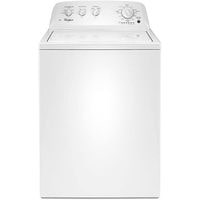Whirlpool Washer Leaking From Bottom. The Whirlpool brand of washing machines has gained a reputation for being among the most dependable models available, but they can still experience problems.
If your washer is leaking from the bottom, it’s important to realize before you call in a repairman that there are certain simple methods you can try that may correct the problem yourself without having to spend too much money or enlist help.
Whirlpool Washer Leaking From Bottom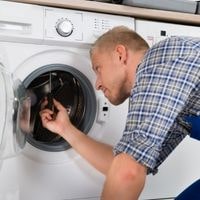
One of the most common reasons for issues with a Whirlpool front load washer is something to do with the drain hose.
Common problems include cracks or holes in the hose itself, which is one of the first signs that something isn’t quite right.
This can be reduced or prevented by making sure you take care of the hose properly on an ongoing basis.
In fact, if you think that your hose may be causing a problem, it’s best to examine it and see whether or not there are any leaks immediately, as you never know what could occur as time goes on.
Sealing Issues With Doors
There are a number of procedures you can employ when your washing machine begins to leak from the bottom. A faulty door seal is one of the most common causes of water damage and can be fixed by replacing the O-ring.
If the seal is intact, then consider looking for other causes of water damage resulting from flooding. There could be a leaky pipe, a clog in a drain line, or something preventing your front-loading washer door from closing properly.
The clothes washer needs to be free of debris so that it functions properly later. Quite often, once you’ve successfully dealt with leaks by addressing all their contributing factors, you may have to replace your rubber O-ring gasket.
Last but not least, check for frays or wear within the ring itself. Forging ahead into this plumbing repair yourself won’t just save you money. It’ll empower your inner handyman.
Coupler malfunction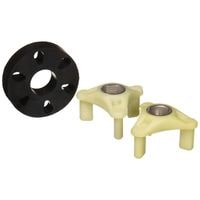
You might need to replace the motor coupler if your washing machine leaks or is not working properly. Under the bottom of the washer is the transmission, which is located below the motor.
The motor coupler is located between the transmission and the motor. After a cycle is finished or if there is an overfill warning, these come into contact with water and can cause damage to your clothes and surroundings.
If you notice any issues with your washing machine, you should replace the damaged coupling with a new one as soon as possible.
Water Pump Fault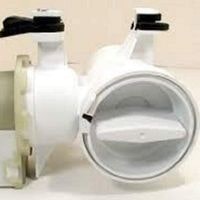
A leaky washer can be the result of a faulty water pump or compromised hoses. In either case, you’ll notice lots of shaking or rumbling from the machine when in use.
To diagnose which it is might seem difficult, but read on, and we’ll help. When a washing machine gets filled up with water, the water pump makes sure it gets pushed through to the tub and out to where it can do its job properly.
While this happens, there are two large black hoses that come out from underneath where you put your clothes. If they’re somehow compromised or snapped, they could be leaking all over the place, making your washing journey very unsuccessful.
Tub Seal Issue
If the tub seal is leaking water, it’s important to be aware of what may happen. If the tub seal is leaking water, water could leak through the tub seal and into the bearings of the drum, causing them to wear prematurely.
For this reason, if you have a leak in your tub seal you should also replace your washer’s drum bearing because dealing with both problems at once can save you time and money down the line.
Drain Hose Problem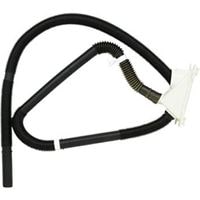
The drain tank is leaking. Often, the issue with leaking drains is either a hole in the hose or a tear at the hose’s connection to one of the other components within the drainage system.
Leaks can also occur due to corrosion that develops over time and weakens a hose’s material composition.
Inspect for signs of a leak developing near your washer’s drainage system wet spots on floors or walls surrounding it are often indicative of there being a problem with the drainage tank.
If you identify any signs of leaks near your washer, you should contact a professional or take apart your washer yourself to survey where the issue may be originating from and how best to get rid of it.
Filter or basket clogged
A washing machine with a clogged catch basket can be a major headache. The catch basket acts as the laundry soap’s last line of defense.
It keeps excess water from leaving with the dirty clothes, which is then drained back down into the drum to keep the washer from overflowing.
If this part becomes clogged or even partially blocked with soap scum or fiber buildup, it might result in leaks and breakdowns that present major problems for your machine’s main drainage system.
The best way to prevent these issues is by following your owner’s manual and taking out your machine’s parts on an ongoing basis to clean them thoroughly.
Check The Water Inlet Valve
The water inlet valves are not working properly. There are several problems that may cause this problem. They are plumbing-related plumbing problems.
The valves are not supporting the weight of the water well, or there is debris that is preventing proper operation, or there is a buildup of dirt on their screens that is slowing the water flow because the valves can’t be fully opened all the way. Replace both of them and add an inline flow filter to prevent it from happening again.
FAQs
The bottom of my front-load washer leaks. What should I do?
A washer door seal seals the door of a front-loading washing machine when it is closed to prevent water from leaking. It is made of rubber and seals the door when it is closed. Torn or stiff, it may not function properly. If the machine is filled to the brim, water will leak out of the door.
What is the location of the drain pump on a washing machine?
Pumping the water through the drain hose to be drained away is the function of the drain pump. Your washing machine’s drain pump lies at the bottom, but it can be easily accessed for replacement.
Whirlpool Washer Leaking From Bottom
Related Guides
